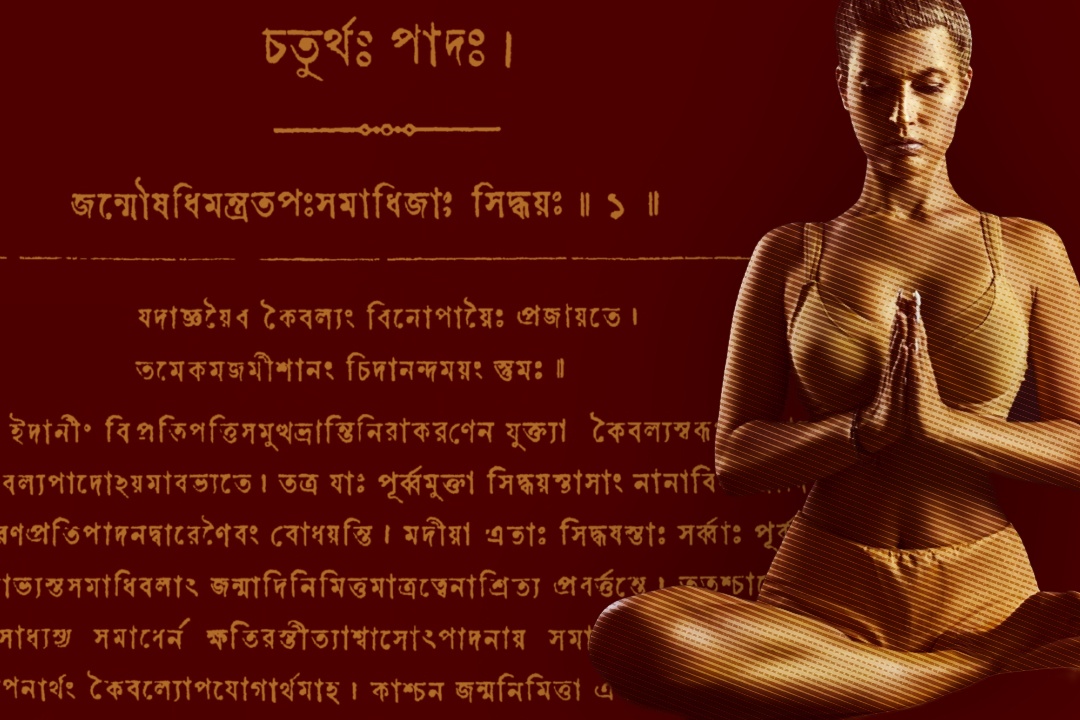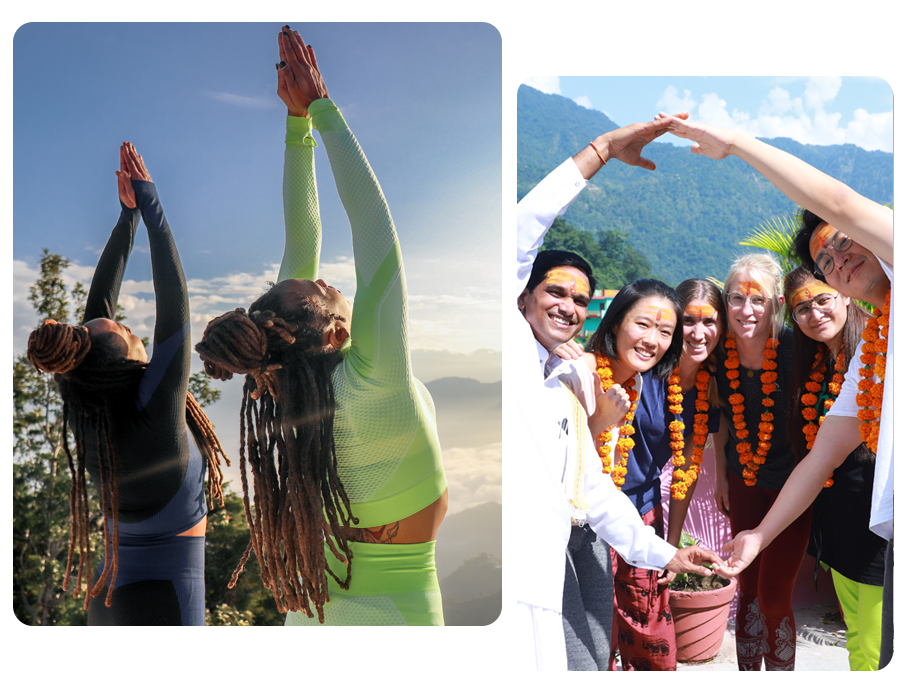What Is Patanjali Yoga Sutras And How Many Are There?
If you have been dabbling in yoga for a certain period of time, you probably know, who Patanjali is. He is an Indian sage, who has supposedly written a number of yoga books. The most prominent among his acclaimed works happens to be Patanjali’s Yoga Sutras. The classical yoga text dates back to 200 BCE – 200 CE. If you skim through old Vedic records, you will find multiple books on yoga. However, such an amount of information may be too hard to handle. Thus, Patanjali, who also practiced yoga himself, managed to compile all the works into the Sutras. However, many scholars who have studied about the Vedic scriptures, and also about the life and times of Patanjali believe, that some of the texts come from a period after the sage’s death. So, it is apt that the disciples, could have compiled all the works, according to the instructions left by Patanjali, before his death.
There are some schools of thought, which believe that Patanjali may have been an immortal as well. The reason being, that the three books were written in a span of 1,000 years. You can learn about such details in the courses that are conducted by the best yoga school in rishikesh.

More On Patanjali’s Works And The Sutras
Yoga sutras are one of the most commonly referred books on yoga, as Patanjali is also hailed as the ‘Father of Yoga’. Apart from Patanjali’s Yoga Sutras, there are two other notable works on yoga, penned by the sage. They are ‘Mahabhashya,’ which dates back to the second century BCE, which is a commentary. The original work was a compilation of Sanskrit grammar text that was written by Panini. The other one happens to be Carakavarttika, which dates back to the 8th and 10th centuries. It is a take on the Charaka Samhita. This book mainly contains the Ayurveda records. You will be referring to the same in the 200 hour yoga teacher training in rishikesh.
According to the Sutras, yoga is a mechanism to control the body, breathing, and senses. It helps one to engage in meditation, to move towards liberation, slowly.
- The first sutra is Yama, which means restraint from unethical actions, and the second is Niyamas which means observance of positive actions. It mainly helps to control the lower instincts of one’s nature and also helps to cultivate good character.
- The next three are, asana or physical postures, pranayama or breath control, and pratyahara , which is equal to sense withdrawal. These together, enable control over the body, breathing functions, and the senses.
- Finally, dharana is the sixth which means concentration and Dhyana means meditation. Both help one to control the mind, thus leading the yogi to Samadhi.
This system is known as Ashtanga yoga or the Eight Limb Yoga system. However, it not to be confused with Ashtanga yoga, which is a form of yoga practice taught by the late K Pattabhi Jois and others who follow in his lineage.
The Bhagavad Gita, on the other hand, is the best known religious text on Hinduism, and it states that liberation is accessible with the help of the mind. It also tells, that the mind is the friend for one who has conquered it, but the greatest enemy of one who fails to make friendship with it.
You may never know the full truth of Patanjali’s life as per the academic historians; the fact is that a huge number of people have been and continue to be benefitted by the practice of yoga. No matter, what the dates of origin of the Sutras are, or whether written by Patanjali himself, or his disciples, the influence of these verses and texts has continued to transform the lives of millions. The best yoga center in rishikeshwill be able to provide you with the best knowledge about the same. The teachers will explain each and every sentence, so that, as a yoga practitioner, you have a fair idea about it.
Now, let us delve into the Sutras in detail.
Patanjali’s Eight Yoga Sutras
1. Yamas
Yamas mean restraint. In the light of yoga, the Yamas means the activities, which you will refrain from doing. If you succeed in refraining from unwanted and unsolicited activities, you will be able to improve your character. The Yamas is succeeded by the Niyamas, but they are as different as chalk and cheese. The Niyamas are the habits that you need to culture.
At first, you should clearly know about the five yamas.
- Ahimsa
- Satya
- Asteya
- Brahmacharya
- Aparigraha
Ahimsa means non-violence. If you do not harm others, no harm will come to you. It not only relates to physical violence, but mental as well as emotional violence. There are a few strategies, which you must practice. Apart from not engaging in violence yourself, you must stop others from doing it as well. Avoid food and drinks, which might cause harm to your body. Moreover, you ought to practice kindness and forgiveness, with all. You may also refrain from harming the small creatures, inside the house. Move them away instead.
The next Yama, which you need to take care of, is Satya. It mainly means, that apart from your own truth, you must also acknowledge the universal truth. It is more than, just hiding the truth. If you are honest to yourself, life will be a lot easier than it is.
The Hrishikesh Yoga School will help you to learn such commandments, as they are better known as. The next Yama, Asteya deals with non-stealing nature. Most of you may think, that physical stealing has been addressed here. However, it is much more than that. When you bunk work that amounts to stealing. Not keeping promises also amounts to stealing. You should always negotiate fair deals, so both parties will be happy.
Brahmacharya is also worth mentioning here, in the context of yoga. It does not tell you to maintain celibacy, if the aim of your life is not salvation. However, you must maintain moderation in everything. Avoid activities that are addictive.
Aparigraha means non-collection. This will teach you to let go of the urge to hoard things. You have to learn to deal with possessiveness. If you feel that you have an urge to buy something, first see whether you really need it. Then only go for the purchase.
2. Niyamas
The Niyamas are the second limb of yoga, to be precise. It mainly refers to the duties, which you must observe in this life. These if followed, can help with character building as well. There are five Niyamas, which you need to take care of.
- Saucha
- Santosha
- Tapas
- Svadhyaya
- Isvara Pranidhana
Saucha can be translated as cleanliness. However, you need to learn to look above physical cleanliness. It is about the bad habits, that you need to let go of. Instead, start culturing the good habits.
Santosha refers to contentment. The mind often tends to fluctuate a lot. Santosha will help you to accept what you have. It will also help you to appreciate the things in life, which may seem small. However, such small things may be enough for happiness.
Tapas, is that burning desire inside you. You can also call it enthusiasm. You can cultivate courage and self-discipline. You need a fiery passion to get hold of the spirituality that you seek.
The fourth one, Svadhyaya means self-study. And, it is absolutely important. It encourages one to further educate oneself.
The last one means surrender to God. It can be any higher power as well. You can now master all of the above, through constant practice in the 300 hour yoga teacher training in rishikesh.
3. Asanas
It may only mean the seat. However, it has the power to raise your consciousness. You will be performing various poses, to strengthen the physical body. It is about grounding yourself. Once you have achieved victory over the asanas, you can move onto higher kriyas that can help you to merge with the universe. There are various poses, standing ones, seating ones, inverted poses, forward folding ones, and supine ones. You will be guided through the poses by the eminent teachers at the ashram. Hrishikesh Yoga School is one of the best schools, where you can learn yoga asanas. The teachers will also teach you about alignments as a part of the course.
3. Pranayama
It means expansion of breath. If you breathe properly, without any obstacle, you can also free up the flow of Prana within the body. The life force energy is expandable, with the help of breathing techniques. You will learn all of those as a part of the course, as well. The various breathing techniques, that you will be practicing are Bhramari, Bhastrika, and Ujjayi, to name a few.
4. Pratyahara
You will be amazed to know, that all the limbs consist of some amount of Pratyahara. It is also a separate limb in itself. Pratyahara means the control of senses, in the true sense of the word. Pratyahara is about one’s withdrawal from the wrong kind of food. It can be physical food, or mental stimulation as well. You become, what you eat. That is the basis of Pratyahara. If you are always aware of negativity around you, then you will be able to strengthen the immunity.
5. Dharana
It is the sixth limb of yoga that we are going to talk about here. You can also call it the act of concentration. Patanjali defined ‘dharana’ as the binding of the mind, to a central focal point. Most yogis use the breath, as the point of focus. However, you can choose something other than that, as well. It can be a mantra or any image, on which you can focus the mind. You can call it the first one of the innermost practices in yoga. It mainly helps any yogi to move beyond the physical body, into the depths of the self. You will be able to hone your skills at this stage, with some guidance from the teachers at yoga school. It also prepares yourself for the next stage, called Dhyana or meditation.
6. Dhyana
It is the final step towards achieving a meditative mind. However, it is one step behind Samadhi, where you become one with the universe. You can experience this step, when all the previous steps have been conquered. It is unshakeable, to the extent, that no noise, or human intervention can distract you anymore. Once you are able to focus on a single point, the process becomes easy. Each one of you, may have tried your hands on meditation, but not everyone succeeded. It is due to the fact, that finding a focus is easy. However, maintaining your concentration on one object is the hardest. If you practice the previous sutras, to the core, then only you can achieve this state of mind.
7. Samadhi
It is the last of the steps, in the realm of yoga. This is a state, when you are unperturbed. It is the end point of spiritual activity, to say the least. If you are doing it right, it can also lead to freedom from the cycle of rebirths. It is a state of meditative absorption, where external stimuli cannot touch you. It also signifies the ultimate connection with the divine. You cannot differentiate the self from anything else, at this stage. If you go about the previous limbs properly, then this state is achievable.
Thus, now you know about the Yoga Sutras in great detail. However, you should and always study the verses, so as to understand and absorb the same. As a yogi, it is very important for you to remind yourself, the true purpose of your journey.





